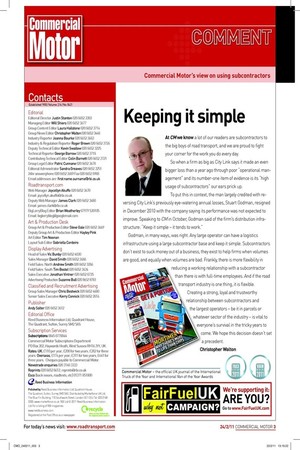Keeping it simple
Page 2

If you've noticed an error in this article please click here to report it so we can fix it.
At CM we know a lot of our readers are subcontractors to the big boys of road transport, and we are proud to fight your corner for the work you do every day.
So when a firm as big as City Link says it made an even bigger loss than a year ago through poor “operational management” and its number-one item of evidence is its “high usage of subcontractors” our ears prick up.
To put this in context, the man largely credited with reversing City Link’s previously eye-watering annual losses, Stuart Godman, resigned in December 2010 with the company saying its performance was not expected to improve. Speaking to CM in October, Godman said of the firm’s distribution infrastructure: “Keep it simple – it tends to work.”
Godman, in many ways, was right. Any large operator can have a logistics infrastructure using a large subcontractor base and keep it simple. Subcontractors don’t exist to suck money out of a business, they exist to help firms when volumes are good, and equally when volumes are bad. Frankly, there is more flexibility in reducing a working relationship with a subcontractor than there is with full-time employees. And if the road transport industry is one thing, it is flexible. Creating a strong, loyal and trustworthy relationship between subcontractors and the largest operators – be it in parcels or whatever sector of the industry – is vital to everyone’s survival in the tricky years to come. We hope this decision doesn’t set a precedent.
Christopher Walton











































